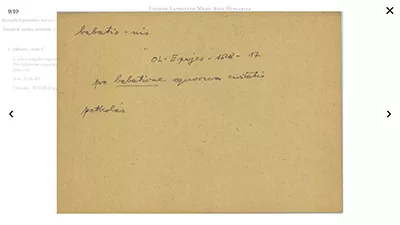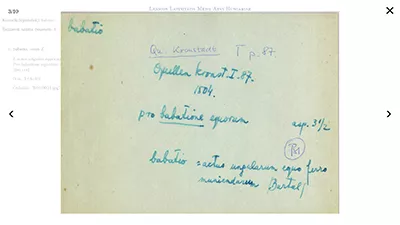

The Lexicon Latinitatis Medii Aevi Hungariae, produced within the framework of the UAI Dictionary Programme, is a large dictionary covering the Latin language spoken and written in the Kingdom of Hungary during the Middle Ages.
It defines the meanings of the words, then supports the definitions with short quotations from the sources. Up to 1844, the Hungarian Latin language was used in Hungarian governmental and official documents almost exclusively, and during this period was an important tool for exchange of European cultures. Now it is undispensable in many areas of medieval studies. Work on the Latin Dictionary began in 1934, and it started to appear in print in 1987. The Hungarian Dictionary progressed in parallel with its Western and Central European counterparts.
Words in source texts are linked to their immediate syntactic context and were written out on individual slips of paper, and these slips of paper were then filed alphabetically under guard sheets. The slips were placed in shoeboxes. This storage system is nowadays not in accordance neither with modern research requirements nor with security requirements. Since the 1990s, the research team that produced the dictionary has been using different
computer systems, which has greatly facilitated the conversion of the basic dictionary text into a marked up database and its publication on the World Wide Web (https://clph.elte.hu/llmaeh/mklsz). However, since the editors of dictionary entries are in most cases using only a part of the data available, many data collected are still in manuscript form, and continue to offer valuable opportunities for researchers in different fields. The consideration behind the Proof of Concept competition was based on the idea to make available this manuscript material as images to the researchers, and attach to the existing textual electronic database. The scanning was completed at a very high quality thanks to the grant. Since the majority of the handwritten slips can only be deciphered by the human eye and brain, the next step is to manually input their content by hand.